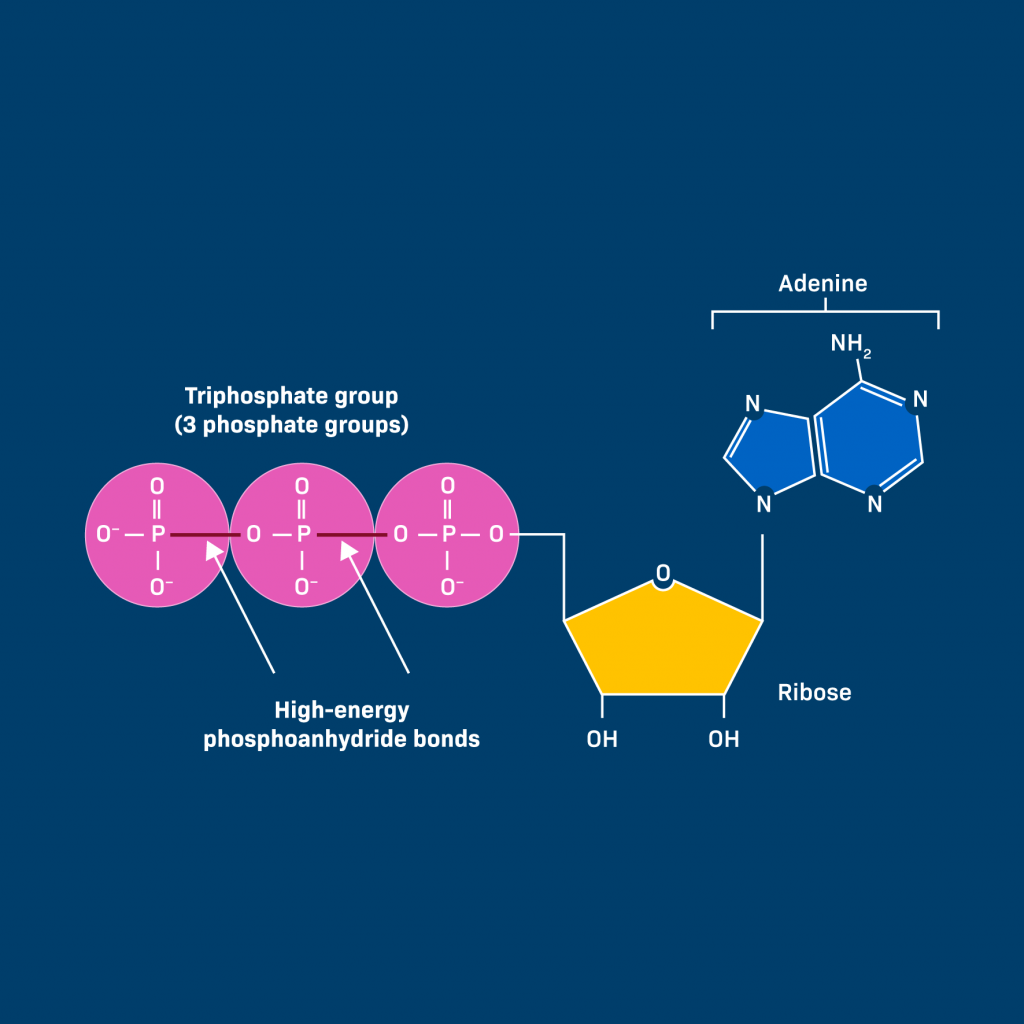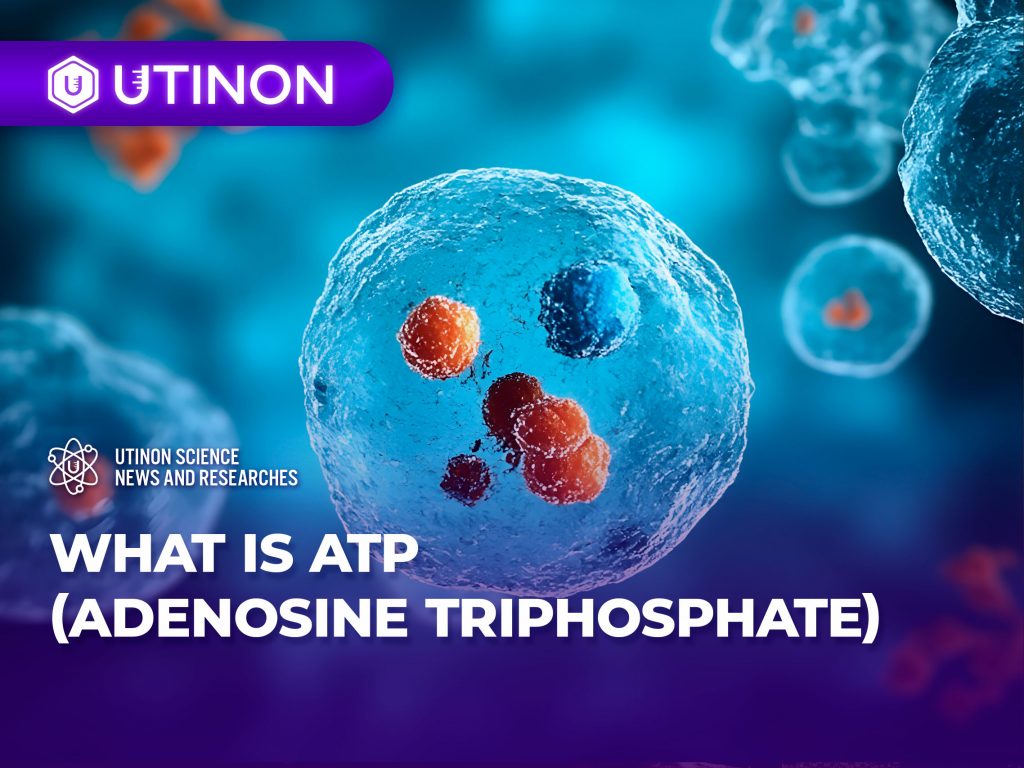In the world of bodybuilding, where every rep counts and every set pushes you closer to your dream physique, energy is king. That energy comes from Adenosine Triphosphate, or ATP, often called the “molecular unit of currency” for cellular energy transfer. This article explores what ATP is, how it’s produced during exercise, its critical role in bodybuilding, and practical strategies to optimize it for better performance, recovery, and muscle growth. Drawing from scientific insights and real-world applications, we aim to provide a thorough guide for fitness enthusiasts and bodybuilders.
Defining Adenosine Triphosphate
Adenosine Triphosphate (ATP) is a complex organic chemical found in all living cells, providing energy to drive processes like muscle contraction, nerve impulse propagation, and chemical synthesis. Structurally, ATP consists of adenine (a nitrogenous base), ribose (a sugar), and three phosphate groups, classified as a nucleoside triphosphate. In neutral solution, ionized ATP exists mostly as ATP4−, with a small proportion of ATP3−, and its typical intracellular concentration is 1–10 mM. Salts of ATP can be isolated as colorless solids.
For bodybuilders, ATP is the lifeblood of their workouts. It’s the molecule that powers muscle contractions, enabling you to lift heavy weights, perform high-rep sets, and push through fatigue. Without ATP, muscles simply can’t contract, making it essential for every movement in the gym.
How ATP is Produced During Exercise
During bodybuilding workouts, muscles demand a constant supply of ATP to perform. The body has three main pathways to produce ATP, each suited to different exercise intensities and durations:
- ATP-PC System (Phosphagen System): This is the immediate energy reserve, consisting of ATP and phosphocreatine (PC). When you start lifting, your muscles use the ATP already present. As it’s depleted, PC donates a phosphate group to ADP to regenerate ATP quickly. This system is ideal for short, intense bursts of activity, like lifting a heavy barbell for a few reps, and can sustain maximal effort for about 10-15 seconds. It’s crucial for bodybuilders during heavy lifts like squats or deadlifts.
- Glycolysis: When the ATP-PC system is exhausted, glycolysis takes over. This anaerobic process breaks down glucose (from carbohydrates) to produce ATP without oxygen, yielding 2 ATP per glucose molecule. It’s useful for high-intensity exercise, such as multiple reps in a set, but produces lactic acid as a byproduct, leading to the burning sensation and eventual fatigue. This is common during bodybuilding sets to failure or high-rep training.
- Aerobic Respiration (Citric Acid Cycle and Oxidative Phosphorylation): For longer or less intense exercise, the body relies on aerobic respiration, which occurs mainly in the mitochondria. This process uses oxygen to break down glucose and other fuels like fats, producing up to 34 ATP per glucose molecule through the citric acid cycle and electron transport chain. It’s more efficient but slower, making it important for recovery between sets or during lighter cardio sessions. ATP production by non-photosynthetic aerobic eukaryotes occurs primarily in mitochondria, which can comprise nearly 25% of a typical cell’s volume.
Bodybuilders typically engage in short, intense sets with rest periods, relying heavily on the ATP-PC system and glycolysis during the sets, while the aerobic system aids in recovery between sets. The overall process of oxidizing glucose to carbon dioxide, combining glycolysis and aerobic respiration, is known as cellular respiration, producing about 30 equivalents of ATP from each glucose molecule.

Optimizing ATP Production for Better Performance
To maximize performance, bodybuilders need to ensure their bodies can produce and utilize ATP efficiently. Here are evidence-based strategies:
- Proper Nutrition: Carbohydrates are the primary fuel for ATP production, especially during intense exercise. Consuming sufficient complex carbohydrates before and after workouts ensures a steady supply of glucose for glycolysis and aerobic respiration. Proteins are also vital, providing amino acids for muscle repair and growth, and can be used for ATP production if necessary. Hydration is critical, as water supports all metabolic processes, including ATP synthesis. For example, a bodybuilder might eat a carb-rich meal like oatmeal with fruit before a workout to fuel ATP production.
- Creatine Supplementation: Creatine is a naturally occurring compound that increases phosphocreatine stores, allowing for faster ATP regeneration from ADP during intense exercise. Numerous studies, such as those found on the National Strength and Conditioning Association website, show creatine enhances strength and power output in resistance training, making it a staple for bodybuilders. Typical doses range from 3-5 grams daily, which can help perform more reps or lift heavier weights.
- Training Methods: Training can influence ATP production capacity. Incorporating high-intensity interval training (HIIT) can improve both aerobic and anaerobic energy systems, enhancing enzyme activity involved in ATP production. However, since bodybuilders focus on hypertrophy and strength, balancing intense weightlifting with some cardiovascular exercise can aid recovery and overall fitness. For instance, adding light cardio on off days can improve mitochondrial function, supporting ATP production for better recovery between sets.
- Rest and Recovery: Rest is crucial for ATP replenishment. After a workout, the body needs time to recover and rebuild ATP stores, which are constantly being used and regenerated. The body recycles its own weight equivalent in ATP each day, highlighting its rapid turnover. Getting enough sleep and taking rest days allows muscles to repair and grow, ensuring ATP is available for future workouts. Overtraining can deplete ATP stores, leading to fatigue and decreased performance, so listen to your body and adjust training volume accordingly.
- Avoiding Overtraining: Overtraining can impair ATP production by exhausting energy reserves and increasing metabolic stress. Signs include persistent fatigue, decreased strength, and prolonged recovery times. Adjusting training intensity or taking additional rest can help maintain ATP levels and prevent injury.

ATP and Recovery: The Unsung Hero of Muscle Growth
Beyond the workout, ATP plays a vital role in recovery and muscle growth. It’s used for:
- Nutrient Transport: ATP powers the movement of nutrients into cells and waste products out, supporting muscle repair.
Protein Synthesis: Muscle growth requires energy for synthesizing new proteins, and ATP provides that energy. The process of protein synthesis, crucial for hypertrophy, is energy-demanding, and sufficient ATP ensures mTOR (mammalian target of rapamycin) activity, a key regulator of muscle growth, is supported.
Ionic Balance: ATP is involved in maintaining ionic balance across cell membranes, which is essential for proper muscle function and recovery.
To support these processes, ensure you’re eating a balanced diet with sufficient calories, proteins, carbohydrates, and healthy fats, and getting quality sleep. Sleep is when your body does much of its repair and regeneration work, replenishing ATP stores for the next day’s workout.
Practical Tips for Bodybuilders
Here are actionable tips to maximize ATP for your bodybuilding journey:
- Pre-Workout Nutrition: Eat a carb-rich meal 1-2 hours before training to fuel ATP production.
- Intra-Workout Hydration: Drink water during workouts to support metabolic processes.
- Post-Workout Recovery: Consume a protein shake and carbs post-workout to aid recovery and ATP replenishment.
- Supplement Wisely: Consider creatine (3-5g daily) to enhance ATP regeneration, but avoid unproven ATP supplements, as oral ATP is often broken down in digestion.
- Balance Training and Rest: Alternate heavy lifting days with lighter sessions or rest to prevent ATP depletion.
Conclusion
ATP is the powerhouse behind every lift, rep, and set in bodybuilding. By understanding how it’s produced through the ATP-PC system, glycolysis, and aerobic respiration, and by optimizing its production through nutrition, creatine supplementation, and rest, bodybuilders can enhance performance, recovery, and muscle growth. Remember, it’s not just about what you do in the gym, but how you fuel and care for your body outside of it. Embrace ATP as your ally, and watch your gains soar.
Table: Key ATP Production Pathways in Bodybuilding
| Pathway | Description | Relevance to Bodybuilding |
| ATP-PC System | Immediate energy from ATP and PC, lasts 10-15 seconds | Crucial for heavy lifts and short, intense sets |
| Glycolysis | Anaerobic breakdown of glucose, produces lactic acid | Supports high-intensity sets, can cause fatigue |
| Aerobic Respiration | Oxygen-based, efficient, produces up to 34 ATP per glucose | Aids recovery between sets, supports endurance |
